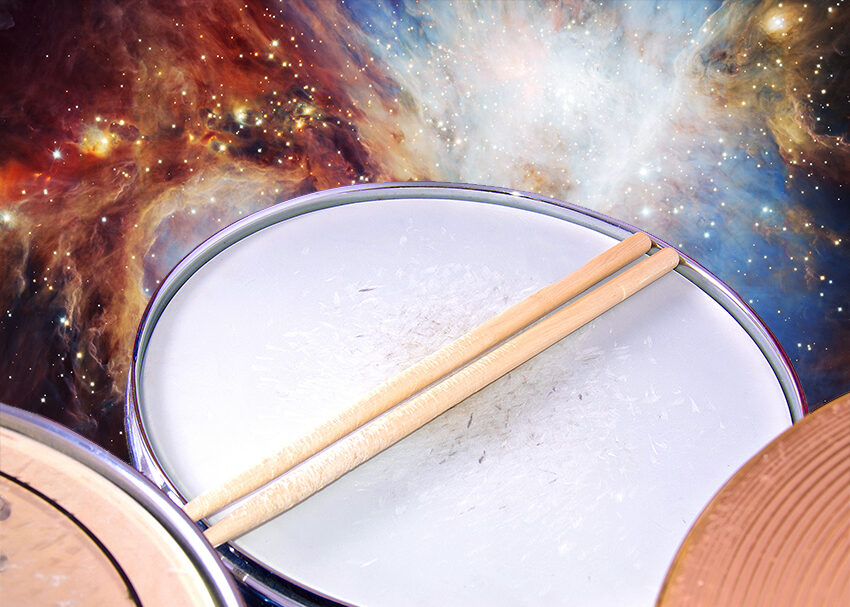One thing that made learning drums harder for me at a young age was that it felt more like homework than having fun. Below, I’ll list a few approaches to drumming that helped me to spice things up a little bit (and later, applied to my life as a drummer in bands).
DJ Snare Wire
This one is kind of goofy, but really fun nonetheless. Take your snare drum and turn it upside down, and rub a drum stick along the snare wire. You’ll want to do this with quick back-to-back motions to achieve the effect we’re looking for.
The sound caused by this technique is really not too far from the sound of a DJ scratching a record. If you ever choose to incorporate this technique into a band situation or as a regular thing for yourself I would highly encourage you to purchase a thicker drum head (at least a one ply or two ply) because most resonant heads on a snare drum are very thin and easy to break if struck normally.
Cymbal Stacks
This was covered briefly in the effects cymbals post but I really encourage drummers to try this out. If you’ve been drumming for several years now, odds are you have maybe amassed a few extra cymbals. If not, just take your crash off its stand and try this out).
There are a lot of approaches to this, and there is really no wrong way to attempt it. Just take your cymbals off their stands and start layering them. Try the smaller cymbal on top, then on the bottom. You can develop stacks that sound like a nasty open hi-hat from a metal song and use it as an accent cymbal, you can develop stacks that have more of an electronic clap sort of effect. The world is really your oyster here and it’s good to experiment.
Cymbals On Your Drums
This is probably one you have seen professional drummers do if you spend a lot of time watching drum videos. You’ll want a small cymbal for this (like a splash cymbal, or a bell). I think this technique has the most use on the snare drum, but that isn’t the only method.
Simply lay the cymbal flat on the surface of your drum, right-side up. Yes really, that’s it. At its simplest this is really no different than throwing a wallet on your snare, or muffling it in some way. But it can be much more complex if you’d like. A couple fun things I like to do are: use one hand to strike the snare, and another hand to move the cymbal around, which creates a sort of pitched wah-wah effect. Strike the outer edge of the cymbal instead of the drum for a pretty convincing electronic snare emulation. Play the bell of the splash as ghost notes to accomplish sounding like more than one drummer at a time or for high-pitched accents (this works great in funk and hip-hop applications).
At the end of the day I encourage you to try anything that spices up your learning experience. You might find a new sound that fits with your band, or it might encourage you to approach the kit differently. There are endless ways to alter a drum’s tone — some of them are musical, and some of them are not, so don’t be discouraged if something you try isn’t for you.
Top image credit: photoangel and NASA




Leave a Reply